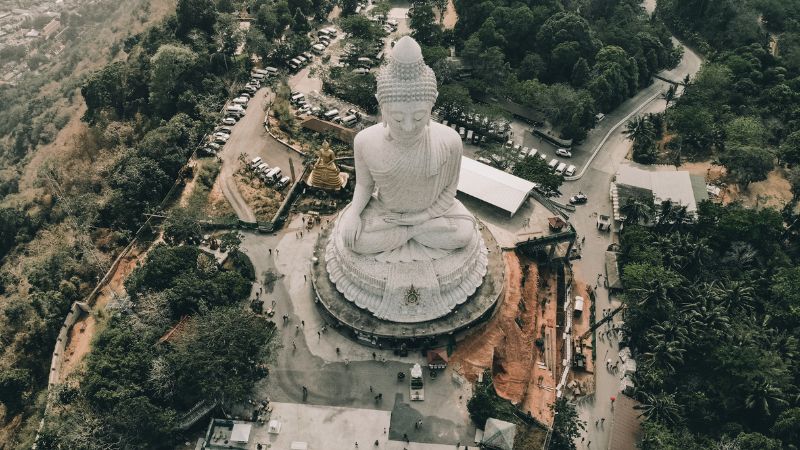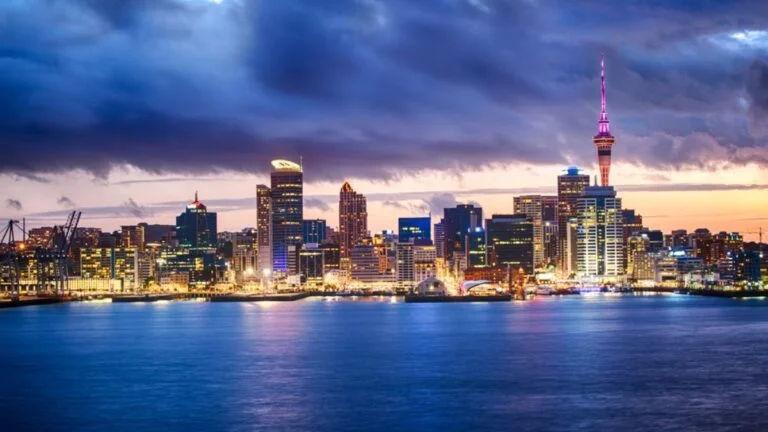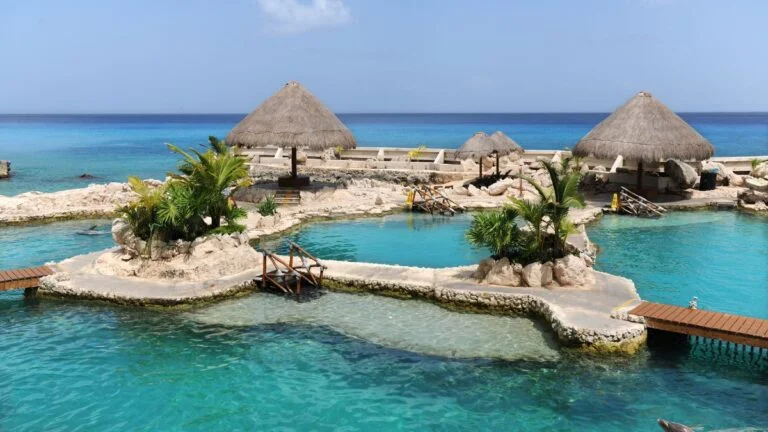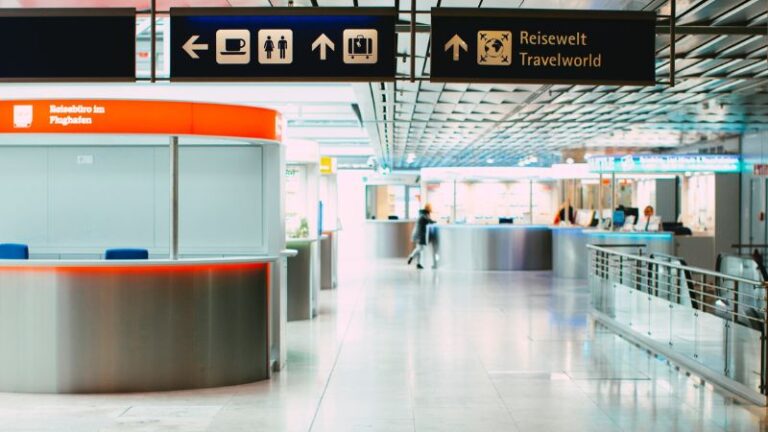Worst Time To Visit Phuket: Don’t Go During These Crowded and Monsoon-Prone Months

As participants in Amazon Associates and other programs, we earn from qualifying purchases. This comes at no additional cost to you. For more details, see our Affiliate Disclosure.
Phuket, one of Thailand’s most popular tourist destinations, attracts millions yearly with its stunning beaches, lively nightlife, and rich culture. However, choosing the right time to visit this tropical paradise can be tricky, as the island experiences significant seasonal variations in weather and tourist traffic.
If you’re planning a trip to Phuket, it’s essential to understand the best and worst times to visit, depending on your preferences and priorities. In this article, we’ll explore why you should avoid the crowded and monsoon-prone months in Phuket and give tips on making the most of your visit to this beautiful island.
Understanding the Seasons in Phuket
Phuket has two primary seasons: dry (November to April) and wet (May to October). The dry season is characterized by low humidity, clear skies, and pleasant temperatures, making it an ideal time for beach activities, water sports, and exploring the island’s attractions. On the other hand, the wet season brings higher humidity, frequent rainfall, and occasional thunderstorms, making it less suitable for outdoor activities.
Despite the lower tourist traffic during the wet season, Phuket still receives many visitors due to its attractive prices, lush greenery, and fewer crowds. However, it’s essential to understand the risks and challenges of visiting this season and take necessary precautions to ensure a safe and enjoyable trip.
The Downsides of Crowded Months
Phuket is a popular tourist destination, and it can get quite crowded during peak seasons, especially in December and January. The high influx of tourists leads to higher accommodation, food, and activity prices, making it less budget-friendly for travelers. Furthermore, crowded beaches and attractions can dampen the overall experience, making it harder to enjoy the island’s natural beauty and cultural richness.
Another downside of visiting Phuket during the crowded months is the traffic congestion, especially in and around the main tourist areas such as Patong, Kata, and Karon. Getting around can be challenging and time-consuming, leading to frustration and exhaustion. If you’re looking for a peaceful and relaxing vacation, visiting during the crowded months might not be the best option.
The Monsoon Season: What to Expect
The monsoon season in Phuket typically runs from May to October and is characterized by higher humidity, frequent rain, and occasional thunderstorms. While the rain is usually not constant and heavy, it can last several hours or even days, leading to flash floods, landslides, and road closures. This can cause significant disruptions to travel plans, making it essential to stay updated on weather forecasts and plan you’re itinerary accordingly.
In addition to the weather, the monsoon season also brings higher risks of waterborne illnesses such as diarrhea, cholera, and dengue fever. Mosquitoes breed in stagnant water, which is more common during the rainy season, making it essential to take necessary precautions such as using mosquito repellent and wearing long-sleeved clothes.
Despite the risks and challenges, visiting Phuket during the monsoon season has advantages, including lower prices, fewer crowds, and lush greenery.
Risks and Challenges of Visiting During Monsoon
Visiting Phuket during the monsoon season comes with certain risks and challenges that visitors should be aware of. One of the most significant risks is flooding, which can occur in low-lying areas and result in severe disruptions to travel plans. Roads can become impassable, and flights and ferries can be canceled or delayed, causing significant inconvenience and expense.
Another risk of visiting during the monsoon season is the higher prevalence of waterborne diseases. Heavy rain can cause sewage systems to overflow, contaminating water sources and increasing the risk of illnesses such as diarrhea, cholera, and dengue fever. Taking precautions such as bottled water, avoiding street food, and practicing good hygiene is essential.
The monsoon season in Phuket also brings higher risks of accidents and injuries, especially for outdoor activities such as hiking, diving, and water sports. Strong winds, high waves, and lightning strikes can make these activities more hazardous, making it essential to follow safety guidelines and seek expert advice before participating.
Despite the risks and challenges, visiting Phuket during the monsoon season can still be enjoyable with proper planning and preparation.
Alternatives to Crowded and Monsoon-Prone Months
If you want to avoid the crowded and monsoon-prone months in Phuket, there are several alternative times of the year that you might consider. These include:
- Shoulder seasons: May, June, September, and October are the shoulder seasons when the weather is still pleasant and tourist traffic is relatively low. You can enjoy lower prices, fewer crowds, and a better chance of finding good deals on accommodation and activities.
- Summer holidays: July and August coincide with the summer holidays in many countries, making them a popular time to visit Phuket. However, the weather is still relatively dry, and you can enjoy a vibrant atmosphere and various activities.
- Festive season: If you’re looking for a lively and festive atmosphere, consider visiting Phuket during the Christmas and New Year periods. While it’s the busiest time of the year, you can enjoy vibrant decorations, fireworks displays, and various cultural and entertainment events.
By choosing the right time to visit Phuket, you can avoid the crowds, enjoy pleasant weather, and make the most of your trip.
Tips for Making the Most of Your Visit to Phuket
To make the most of your visit to Phuket, planning and taking the necessary precautions is essential. Here are some tips to help you prepare for your trip:
- Pack for the weather: Depending on the time of year you’re visiting, you may need to pack rain gear, sunscreen, and insect repellent. Check the weather forecast before you go and pack accordingly.
- Book in advance: To avoid disappointment, it’s advisable to book your accommodation, activities, and transportation in advance, especially during the peak season. This will help you secure the best deals and avoid the risk of missing out.
- Explore beyond the tourist areas: While Phuket has some popular tourist attractions, there are many hidden gems to discover. Consider exploring the less crowded beaches, local markets, and cultural sites for a more authentic experience.
- Respect the local culture: Thailand has a rich and diverse culture, and it’s important to respect local customs and traditions. Dress modestly when visiting temples and avoid showing public displays of affection.
- Stay safe: Phuket is generally a safe place to visit, but it’s essential to stay alert and take necessary precautions. Keep your valuables safe, avoid walking alone in isolated areas, and follow safety guidelines for water sports and other outdoor activities.
By following these tips, you can ensure a safe and enjoyable trip to Phuket and make the most of your time on this beautiful island.
Choosing the Right Time to Visit Phuket
Choosing the right time to visit Phuket depends on your priorities and preferences. If you’re looking for a budget-friendly trip with fewer crowds, the shoulder seasons of May, June, September, and October might be the best option. On the other hand, if you’re looking for a lively atmosphere with plenty of activities, the summer holidays and the festive season can offer a vibrant experience.
If you’re willing to risk visiting during the monsoon season, you can enjoy lower prices and lush greenery, but it’s essential to prepare for the risks and challenges that come with it. However, if you want to avoid the risks and enjoy pleasant weather, the dry season from November to April is the best time to visit.
Understanding the seasons in Phuket and the pros and cons of each season is crucial for choosing the right time to visit. Following the tips and recommendations in this article, you can make the most of your visit to this beautiful island and ensure a safe and enjoyable experience. Whether you’re a budget traveler, a culture enthusiast, or a beach lover, there’s something for everyone in Phuket. Proper planning and preparation can create memories that will last a lifetime.






